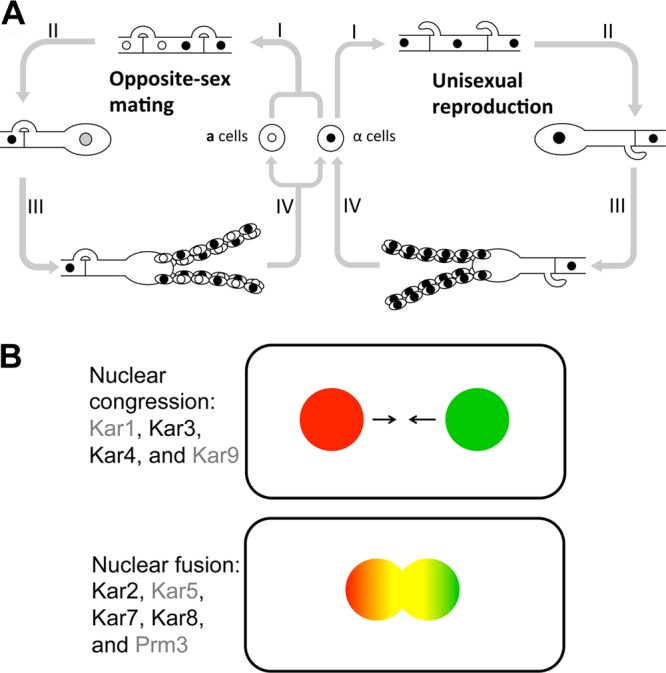Fig 1.

Illustration of two modes of C. neoformans sexual development and two distinct stages involved in karyogamy. (A) Opposite-sex mating. (I) Cells of two different mating types recognize each other and undergo cell-cell fusion to form dikaryotic hyphae. (II) At the apex of aerial hyphae, a basidium forms and karyogamy occurs, representing “late” diploidization. (III) Meiosis occurs, and four basidiospore chains are produced from the surface of the basidium by repeated rounds of mitosis of the postmeiotic nuclei. (IV) Progeny of two mating types disperse. (A) Unisexual reproduction. (I) Only α mating type cells undergo hyphal growth, where “early” diploidization might contribute to filamentation. (II) At the apex of aerial hyphae, a basidium forms and “late” diploidization can occur. (III) Meiosis occurs, and four basidiospore chains are formed. (IV) Haploid progeny disperse. Thus, during unisexual reproduction, two different hypothetical timings for diploidization exist. The figure depicts the hypothesis of “late” diploidization. (B) Nuclear congression and nuclear fusion. First, two nuclei migrate toward each other (nuclear congression): Kar1, Kar3, Kar4, and Kar9 are involved in this process in S. cerevisiae. Second, nuclear membrane fusion occurs and Kar2, Kar5, Kar7, and Kar8 are involved in this process. Karyogamy components that are unique to S. cerevisiae compared to C. neoformans are shown in gray.
